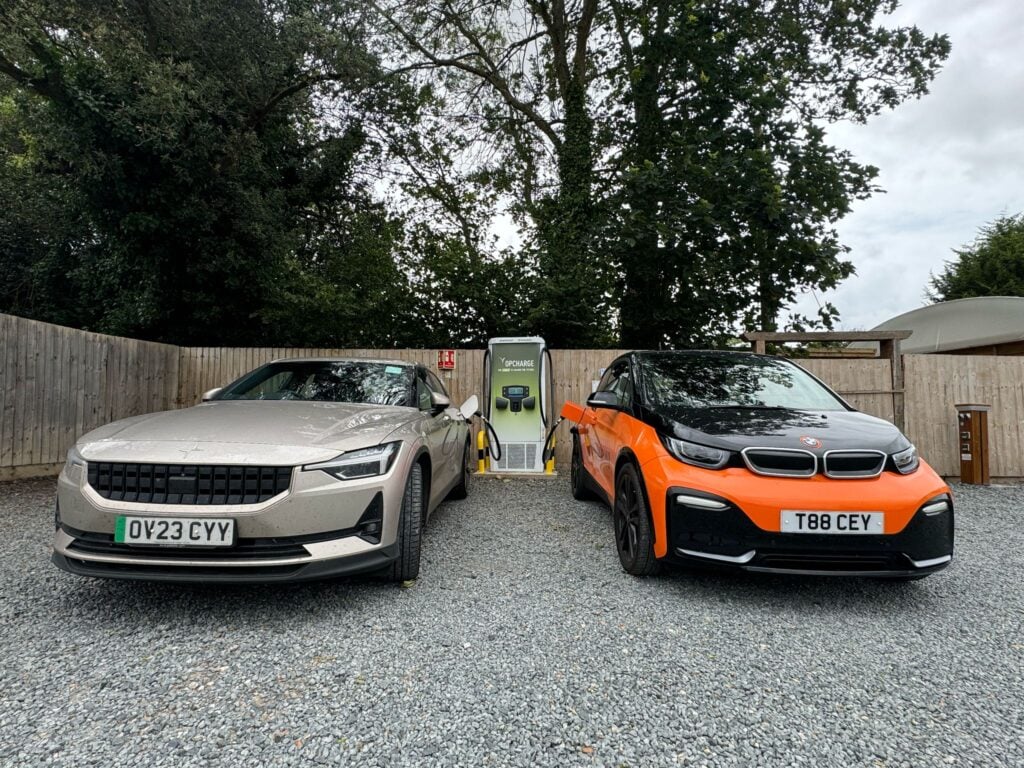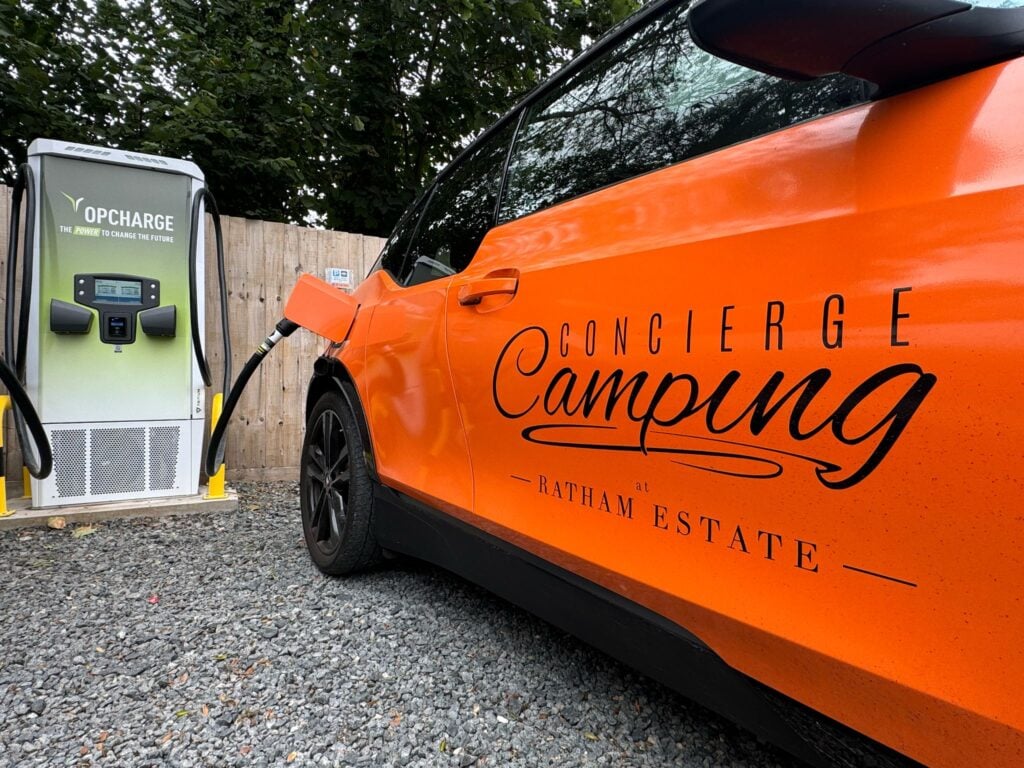Understanding Destination Charging
Destination charging refers to EV charging infrastructure installed at locations where drivers naturally spend extended periods of time—hotels, offices, shopping centers, leisure facilities, and residential complexes. Unlike highway rapid charging designed for quick top-ups during long journeys, destination charging serves customers who park for hours rather than minutes, fundamentally changing both the technical requirements and business model for charging infrastructure.

The UK EV Market Transformation
The UK electric vehicle market is experiencing rapid transformation as part of a global revolution that will see EVs represent one in four new passenger vehicles sold worldwide in 2025, according to BloombergNEF projections of nearly 22 million battery electric and plug-in hybrid sales globally. Goldman Sachs Research forecasts EVs will comprise half of new car sales by 2035, but this shift demands massive infrastructure investment estimated at $1.6-2.5 trillion globally by 2050 for charging infrastructure alone. The UK government faces a particularly ambitious challenge, needing to install at least 300,000 public chargers by 2030, requiring unprecedented daily deployment rates to support the nation’s transition to electric mobility.
However, this infrastructure gold rush has created a misalignment rooted in a fundamental misunderstanding of consumer needs. The industry’s obsession with ultra-rapid charging overlooks that longer charging sessions actually provide superior value—slower charging reduces infrastructure costs, and creates opportunities for meaningful revenue through retail partnerships at charging locations. McKinsey research reveals that while consumers express preference for faster charging, EV drivers are willing to pay about 10% more for on-highway charging than for destination charging, demonstrating that speed comes at a cost that could be better invested in comfortable, amenity-rich environments encouraging longer, more profitable dwell times.
Forward-thinking operators are discovering that destination charging requires a fundamentally different approach—one that prioritizes smart infrastructure planning and ROI maximization.
The Destination Charging Reality Check
Unlike highway service stations or dedicated charging hubs, where drivers need maximum charging speeds during brief stops, destination charging serves a completely different use case. Hotels, offices, shopping centers, and leisure facilities host visitors and employees for extended periods—often several hours or longer. This extended dwell time transforms the charging equation entirely.
“The biggest misconception we encounter is that destination charging needs to mirror the high-power solutions used on motorways,” explains Thomas Herbert, Managing Director at Opcharge UK. “In reality, a hotel guest or an office worker doesn’t need 150kW charging. They need reliable, cost-effective charging that integrates seamlessly with the property’s existing infrastructure.”

Right-Sized Solutions Ensure ROI Advantage
The economics of destination charging favor lower-power solutions like Tritium’s RTM series for several compelling reasons:
Lower Capital Investment: High-power chargers command premium prices, but destination charging rarely requires this level of hardware investment. Lower-power solutions also reduce costs associated with grid connections or modifications to existing site power infrastructure.
Higher Utilization Rates: By aligning power delivery with actual vehicle demand, operators ensure higher utilization against the lower capital investment—the charger is simply in use more of the time. On larger sites, multiple lower-power charging points can serve more customers simultaneously.
“We’ve seen properties achieve payback periods of 2-3 years with thoughtfully deployed lower-power charging infrastructure,” notes a UK Sales Director at Tritium. “The key is matching the charging solution to the actual use case and working within limited site power availability.”
Space Efficiency: Making Every Square Meter Count
Many destination charging locations face unique space constraints that make infrastructure placement particularly challenging. Working a charger and associated bays into an existing site layout comes with challenges, so a compact solution is often essential. Solutions like Tritium’s RTM series address these challenges through compact designs that maximize parking space utilization. The RTM’s profile allows for installation in tight spaces and challenging configurations.
“Space is at a premium in many destination charging cases,” observes Thomas Herbert at Opcharge UK. “The RTM’s design allows us to install charging points up against walls and in narrow parking bays. This flexibility often means the difference between a DC rapid charger scheme working, or having to revert back to much slower AC solutions.”
Power Infrastructure: Working Within Reality
Perhaps the most overlooked advantage of lower-power destination charging is its compatibility with existing electrical infrastructure. Many existing destination charging locations struggle with limited electrical capacity, making high-power charging installations complex and expensive.
Lower-power solutions work within these constraints rather than against them through intelligent load management systems that allow multiple lower-power units to share available electrical capacity, optimizing power distribution without requiring infrastructure upgrades.
A Technical Director at Tritium explains: “The RTM range is specifically designed to work with existing electrical infrastructure. We can install a comprehensive charging solution using the power that’s already available on-site, then scale up intelligently as the property’s EV charging needs evolve.”

Looking Forward: The Smart Approach to Destination Charging
As the UK moves toward its 2030 petrol and diesel vehicle ban, destinations that deploy smart, scalable charging infrastructure today will be best positioned for tomorrow’s EV-dominant landscape. “The properties that succeed in the EV transition will be those that think strategically about their charging infrastructure,” concludes a representative from Opcharge UK. “It’s not about installing the most powerful chargers available—it’s about creating sustainable, profitable charging solutions that serve real customer needs.”
A representative from Tritium adds: “The RTM series represents exactly this kind of strategic thinking. It’s engineered for the specific requirements of destination charging: reliable, space-efficient, and designed to work within the real-world constraints that UK properties face.”
Making the Right Choice for Your Property
For destinations considering EV charging infrastructure, the message is clear: focus on solutions that match your specific use case rather than being swayed by maximum power specifications that may not align with your operational reality. The future of destination charging isn’t about the fastest possible charging—it’s about the smartest possible charging that balances customer needs, property constraints, and long-term profitability.
To learn more about destination charging solutions tailored to UK properties, contact Opcharge UK or Tritium. Both companies offer comprehensive site assessments and customized charging infrastructure recommendations.